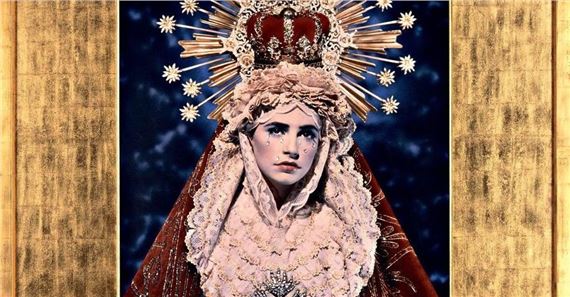Icons
From early icons from Europe and the Middle East to modern and contemporary works, icons have inspired many believers, as well as artists, throughout the ages. The exhibition unveils how spiritual dimensions have been incorporated into artworks since antiquity.
Tradition attributes the first icons to Saint Luke who, after Pentecost, is said to have painted three representations of the Virgin Mary. From the first icons of Europe and the Middle East to modern and contemporary works, these pictorial representations of the divine have inspired many believers and artists. The exhibition Icons, curated by Henri Loyrette, former Director of the Musée d’Orsay and Chairman and Director of the Louvre Museum, reveals how spiritual dimensions have been integrated into works of art from Antiquity to the present day.
The exhibition shows a selection of ancient icons from Europe and Russia – depicting variously Christ, the Mother of God, or individual saints – the striking simplicity of which sets them apart as timeless objects of veneration.
A second set of works by 19th and 20th century artists such as Charles Filiger and Lucien Levy-Dhurmer explores the frontal and depth-less composition of icons. The exhibition also discusses the use that contemporary artists like Yan Pei-Ming and Wim Delvoye make of iconographic language.

Recommended for you
From early icons from Europe and the Middle East to modern and contemporary works, icons have inspired many believers, as well as artists, throughout the ages. The exhibition unveils how spiritual dimensions have been incorporated into artworks since antiquity.
Tradition attributes the first icons to Saint Luke who, after Pentecost, is said to have painted three representations of the Virgin Mary. From the first icons of Europe and the Middle East to modern and contemporary works, these pictorial representations of the divine have inspired many believers and artists. The exhibition Icons, curated by Henri Loyrette, former Director of the Musée d’Orsay and Chairman and Director of the Louvre Museum, reveals how spiritual dimensions have been integrated into works of art from Antiquity to the present day.
The exhibition shows a selection of ancient icons from Europe and Russia – depicting variously Christ, the Mother of God, or individual saints – the striking simplicity of which sets them apart as timeless objects of veneration.
A second set of works by 19th and 20th century artists such as Charles Filiger and Lucien Levy-Dhurmer explores the frontal and depth-less composition of icons. The exhibition also discusses the use that contemporary artists like Yan Pei-Ming and Wim Delvoye make of iconographic language.
Artists on show
- Andy Warhol
- Annette Messager
- Arnulf Rainer
- Bertrand Lavier
- Charles Filiger
- Claude Mellan
- Douglas Gordon
- Duane Hanson
- Ellen Gallagher
- Fabrice Samyn
- Georges Rouault
- Gustave van de Woestijne
- Henry van de Velde
- Jean Fautrier
- Lucien Lévy-Dhurmer
- Marwan
- Michael Craig-Martin
- Mounir Fatmi
- Octave Landuyt
- Pierre et Gilles
- Sarkis Zabunyan
- Titus Kaphar
- Wim Delvoye
- Yan Pei Ming
Related articles
The term “icon” was born with a religious meaning and in the Christian tradition it became the symbol of the veneration of God.















